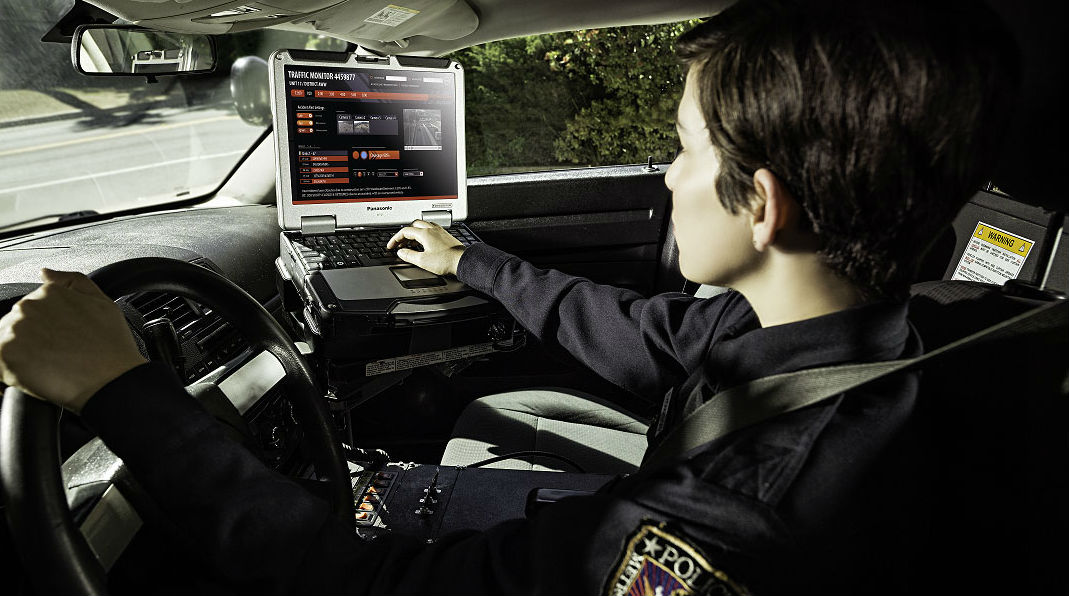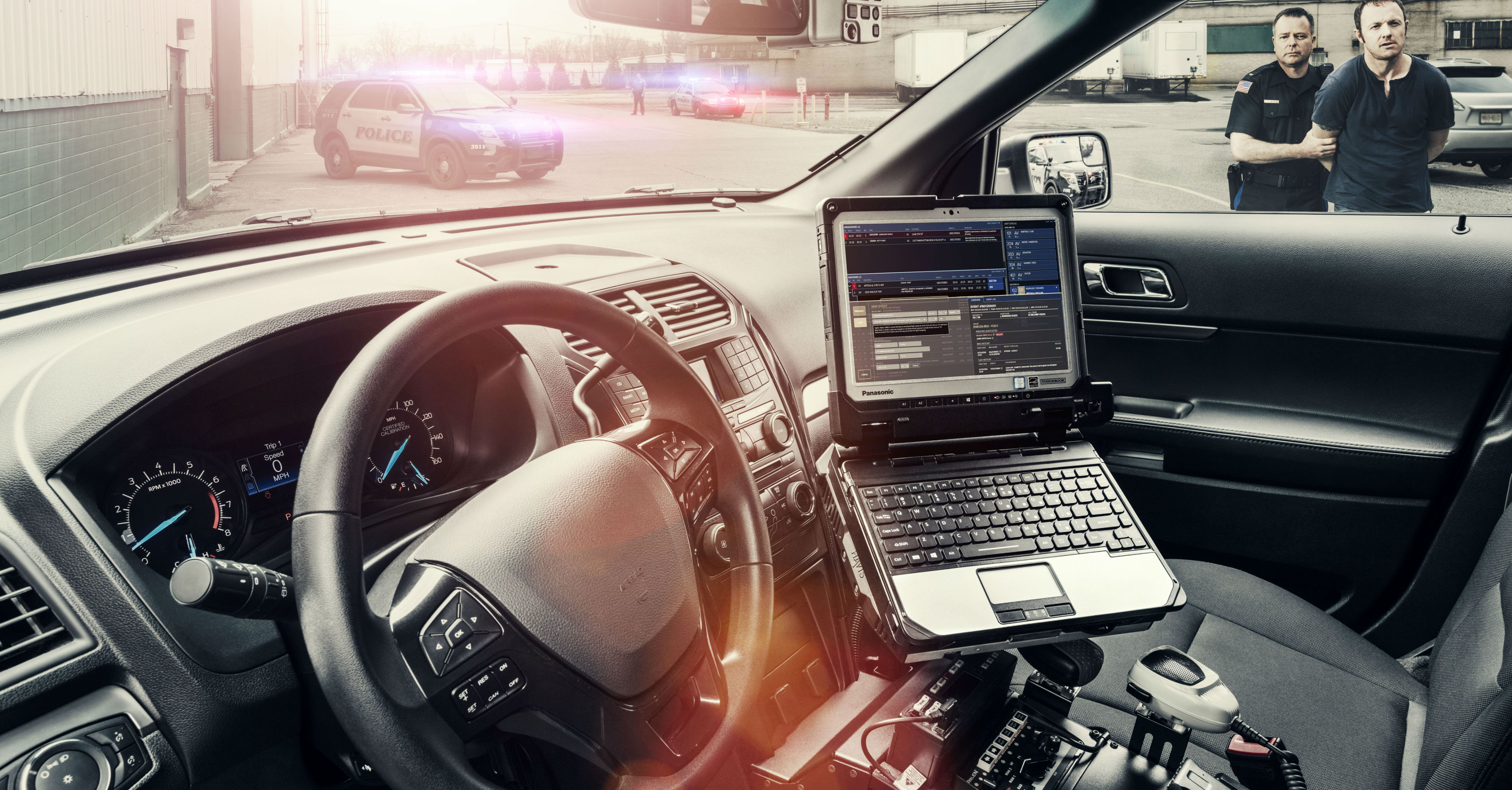How Technology Supports Modern Law Enforcement
Law enforcement agencies are no strangers to collaboration, from departmental communications and data sharing between jurisdictions and agencies to community-based collaborations for reducing crime and establishing trust. With the pandemic came stronger collaborations with new organizations, such as public health agencies. Successful execution of collaborative programs depends on up-to-date police technology, including cloud software, mobile devices for officers in the field, reliable broadband connectivity, and voice-to-text.
Cloud Applications Facilitate Collaboration and Data Sharing
Cloud-based Software-as-a-Service (SaaS) applications and custom-built cloud-native apps make it significantly easier to collaborate inside and outside of law enforcement agencies when compared to on-premises applications. Any user with permission and an internet connection can access cloud apps, including officers in the field equipped with rugged mobile devices.
For example, Windows- and Android-based messaging apps make it easy for squad leaders to broadcast non-urgent messages to all officers, leaving radio channels free for emergency communications. Officers can also communicate one-on-one with other officers in the field or at headquarters.
Using programs such as Microsoft Teams, administrators can grant access to users outside the department to facilitate participation and cooperation from contractors, government and civilian stakeholders, and personnel from other law enforcement agencies. The cloud enables true collaboration across the investigative landscape.
New SaaS computer-aided dispatch (CAD) and records management systems (RMS) also help agencies collaborate. Headquarters benefits from software that is easy to acquire and cost-effective to purchase, while officers can use CAD apps to access real-time intelligence about callers, the situation on the ground, maps and driving directions, traffic and weather updates, and other location-and situation-based data. Mobile connectivity to RMS systems can give officers real-time access to situation-critical data about individuals, incidents, cases, and more while enabling them to file reports from the field.
One of the greatest benefits of the cloud is its potential for mobility. Many CAD systems employ mobile apps that use a mobile device’s GPS to track officers no matter where they are. A recent survey found that 60% of police departments use mobile apps to streamline field reporting, reducing the time officers need to spend sitting in their cars. These apps can integrate with the RMS and other internal systems, allowing officers to stay current on paperwork and reporting without returning to the precinct.
Additionally, cloud-based apps created for special programs, such as community collaboration programs, give officers instant access to program policies, procedures, and other documentation. Meanwhile, other invited authorized users can look up information and enter data as needed. Similarly, the cloud simplifies and facilitates standards-based inter-jurisdictional data exchange.
Rugged, Smart Mobile Devices Are Critical for Officer Collaboration
Officers relying on out-of-date technology often entrust their lives to personal consumer-grade smartphones, including their inherent shortcomings: fragility, short battery life, and dependence on public cellular networks. For many officers, their personal devices provide a primary means to collaborate, look up critical information, file reports, and access cloud applications.
Rugged mobile computers have become foundational for modern law enforcement officers, allowing them to participate in departmental collaboration efforts and perform other essential tasks. Numerous options exist for law enforcement personnel, including rugged handhelds, tablets, or 2-in-1 laptops that can be used as a mobile tablet or placed in a vehicle dock with a keyboard and expansion ports.
For example, the Panasonic TOUGHBOOK N1 Tactical smartphone-like handheld and the Panasonic TOUGHBOOK S1 rugged tablet are both Android devices that offer a familiar, easy-to-learn user interface. The new modular TOUGHBOOK G2 breaks new ground in 2-in-1 design, keeping backwards compatibility with existing mounting hardware and offering an optional keyboard. Officers can take the fully rugged 10-inch Windows tablet into field situations to record interviews, take pictures and videos, and issue electronic citations. In the squad car they can access cloud apps to handle paperwork sooner, place and receive calls, and use collaborative communication programs.
Simplify Admin Tasks with Voice-to-Text
Voice-to-text technology has come a long way thanks to ever-improving advancements in artificial intelligence and speech recognition. With voice-to-text, officers in the field can talk rather than type, making communication and report filing faster and easier without sacrificing situational awareness. The result is more time spent in the community.
The time is right to consider solutions that support voice-to-text. Nearly half of respondents to a recent survey said that the pandemic has increased their documentation burden and added extra responsibilities and new processes, with about half saying they spend at least two hours a day on paperwork.
Be Ready to Innovate, From Headquarters to the Field
Most internal, inter-agency and community collaboration programs start at the top of organizations. That may include selecting software and cloud platforms, seeking funding from federal and state organizations supporting inter-jurisdictional cooperation and data sharing, or leading community outreach efforts. When the fruits of these efforts make their way to your law enforcement presence on the streets, make sure that officers have access to the cloud-based tools they need to simplify administrative responsibilities, ultimately saving time for critical citizen interactions and other police activities.
Learn more about Panasonic’s technology solutions for law enforcement.
![]()


